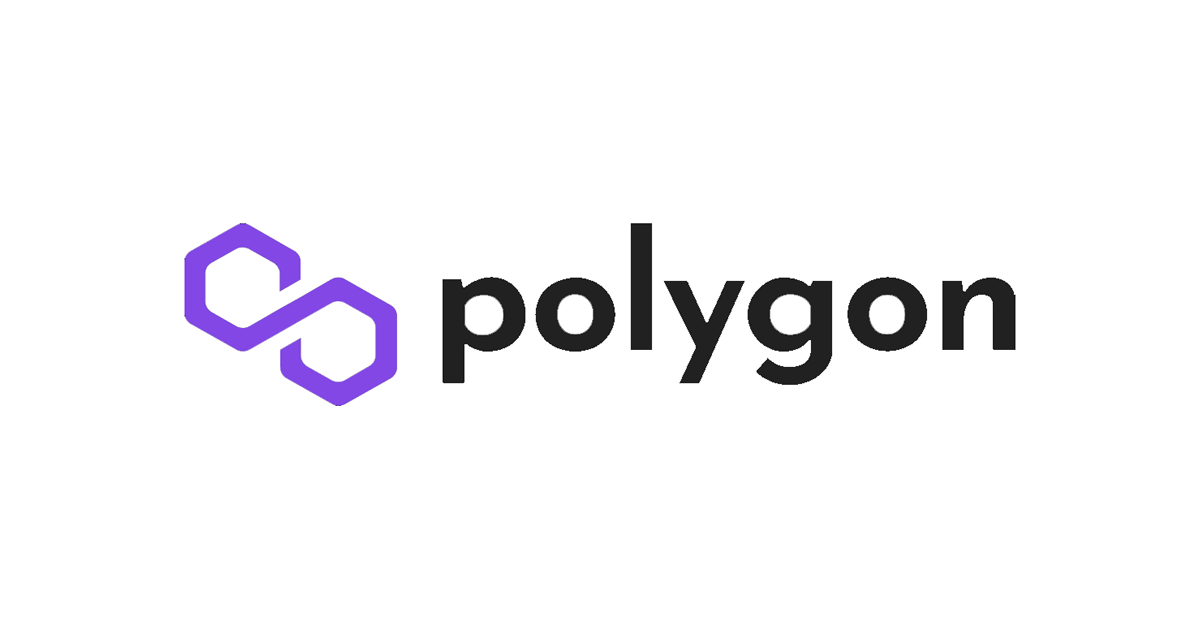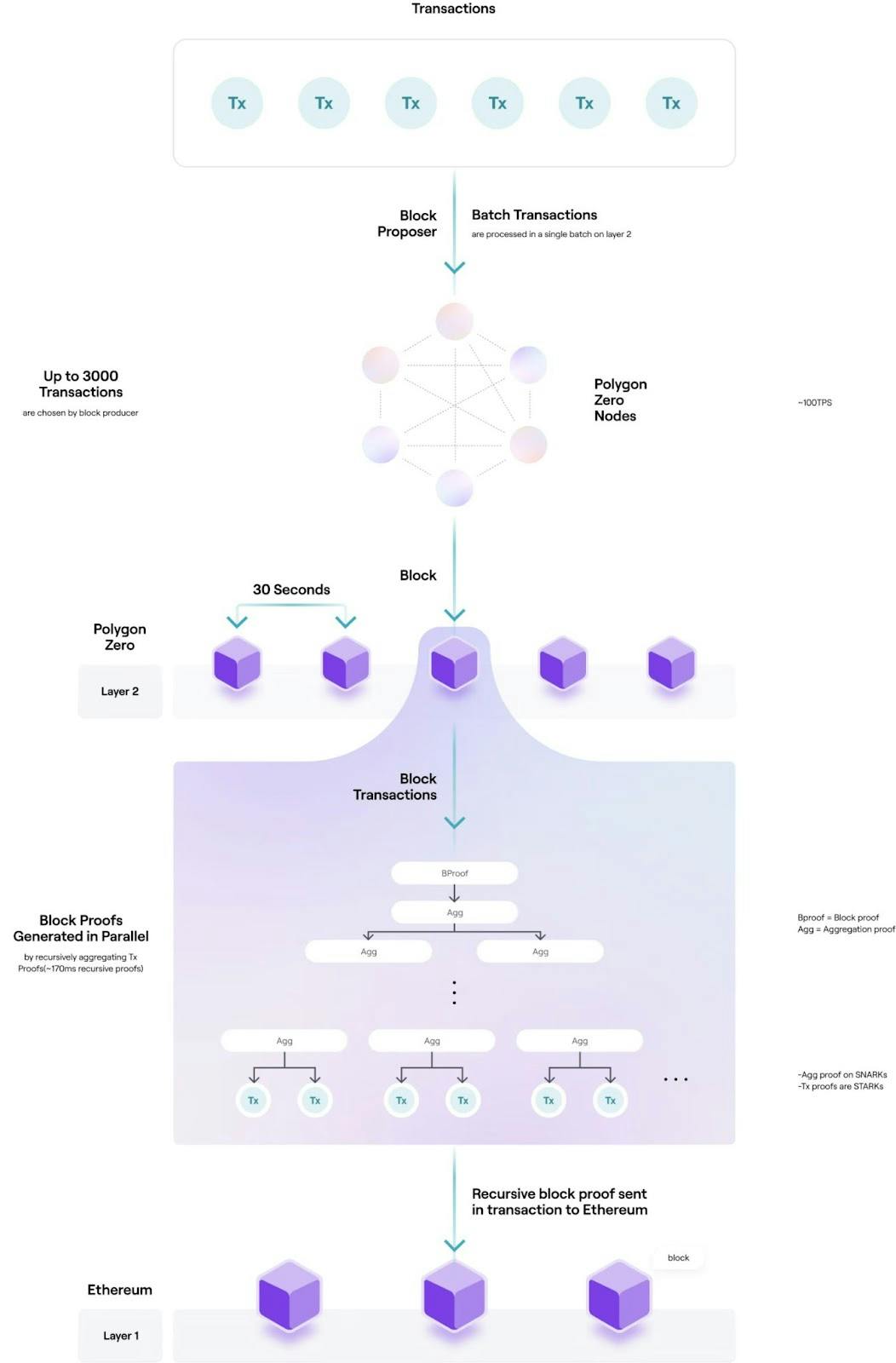
ZK-Rollup Projects: A Complete Guide
Written by Alchemy
The leading zero-knowledge rollup (ZK-rollup) blockchains like Starknet, ZKsync, and Polygon increase scalability and security allowing developers to build products with high speeds and low fees. These Layer two solutions execute transactions off-chain before combining and submitting as one on the Ethereum main chain.
The top Ethereum ZK-rollup projects like dYdX, Sorare, Immutable, Deversifi, and Celer have made leaps in reducing costs and creating frictionless user experiences in everything from wallets to decentralized exchanges to dApps and more.
What are the most popular ZK-rollup blockchains?
The top ZK-rollup blockchains include StarkNet, zkSync, and Polygon Zero.
1. StarkNet
StarkNet, a is permissionless decentralized ZK-rollup that operates as a Layer 2 network over Ethereum enabling dApps to scale. Starknet’s gas fees are 100x lower than transactions on the main chain making it ideal to increase the affordability of transaction-heavy dApps.

Total Value Locked (USD): $1B
Total Number of Transactions (All Deployments): 173M
Cumulative Trading (USD): $602B
NFT’s Minted: 56.2M
Source: StarkEx (May 25, 2022)
StarkNet, like most ZK-rollups, bundles data and moves it off-chain for processing and computing. This helps reduce demand on the main chain.
All transactions on StarkNet are periodically batched and given a STARK proof to prove their validity. Using STARK proofs drastically reduces the computational power needed to verify. Starknet aims to decrease costs by two orders of magnitude compared to Ethereum, while increasing transaction speed by one order of magnitude by the end of the year.
StarkNet hopes to bring “crypto apps for all”, and It’s the first ZK-rollup to offer a general-purpose smart contract platform on a fully composable network. Anyone can develop and deploy their own applications, send transactions or interact with smart contracts."
StarkNet smart contracts are written in Cairo (like Ethereum and Solidity), which allows for optimization and scalability of STARK. However, transpilers to Cairo from Solidity and other languages are being developed for faster deployment.
Starkware, the company behind Starknet and StarkEx, was founded in 2017 by Eli Ben-Sasson and Alessandro Chiesa. The team is also behind StarkEx, a permissioned and tailor-made scaling engine currently used by many of the top ZK-rollup projects such as dYdX, Sorare, Immutable, and DiversiFi.
2. zkSync
zkSync is a trustless protocol for scalable low-cost payments on Ethereum. The ZK-rollup technology launched in 2020 by Matter Labs, founded by Alex Gluchowski and Alexandr Vlasov, aims to achieve a VISA-like scale of throughput of thousands of transactions per second.

Total Value Locked (USD): $73.46 M
Source (June 6, 2022)
The team hopes to attain this speed and affordability without compromising on user control or security. zkSync is notable for being fully noncustodial with zero trust assumptions. This means that zkSync validators don’t have the ability to interact without users’ explicit permission.
zkSync is also the only zk-rollup protocol that supports full EVM compatibility. With zkSync, you’re able to take existing live smart contracts from Ethereum and seamlessly redeploy them. This makes it attractive to developers who prefer to have the same code across Layer 1 and Layer 2.
Notable Projects on zkSync
Here is a small sample of projects that are integrated with zkSync:
Gitcoin
Tally
Yearn Finance
Gnosis Safe
1inch Network
Snapshot
Argent
3. Polygon Zero
Polygon Zero is a ZK-rollup solution specifically designed to reduce the computational cost of generating validity proofs through recursive proofs.

Total Value Locked (USD): $2.6B
While ZK-rollups can increase scalability, their functionality is limited by the time-intensive and costly proof-generation process. Polygon Zero solves this problem by using recursive proofs, which are faster than existing prover systems.
Typically ZK provers generate proofs for one transaction at a time, but Polygon’s ZK-rollup (ZKRU) project, Polygon Zero simultaneously generates proofs for all transactions in a batch before rolling up those proofs into a single proof for the main chain.
Polygon Zero (formerly Mir Protocol) was started by Brendan Farmer and Daniel Lubarov of Predicate Labs in 2019. The team rebranded after its $400M acquisition by Polygon (formerly MATIC Networks) in December 2021 as part of their broader pledge toward investing in scaling zero-knowledge technology.
The first version was only able to generate proofs in two minutes, but the team has made consistent strides and as of 2022 the latest version powered by Plonky2 (yet to go live) can generate recursive proofs in 0.17 seconds!
Not only is Polygon Zero the fastest proving technology, but it also requires significantly less computational power than other ZK-rollups. In fact, a regular Macbook Air can complete a proof in 0.3 seconds! This is important for decentralization as Polygon Zero can use recursive proofs to scale horizontally without sacrificing latency.
Top 10 ZK-Rollup Projects
The best ZK-rollup projects like dYdX, Sorare, ImmutableX, DeversiFi, Celer, Argent, zkLend, and Numio are tackling a diverse range of problems across web3.
1. dYdX
dYdX is a decentralized perpetual trading platform with low fees, deep liquidity, and up to 20× leverage. dYdX was founded in 2019 by Antonio Juliano, and today it has a $203M market cap and over 60,000 users on StarkEx.
The decentralized perpetual trading platform dYdX uses StarkEx to significantly scale trading. Using ZK-rollup technology expands dYdX’s trade settlement capacity, while still basing its security on the underlying Ethereum blockchain.
StarkWare’s dYdX integration combines STARK proofs for data integrity with on-chain data availability to ensure a fully non-custodial protocol. These lower gas costs result in much lower trading fees and minimum trade sizes.
2. Sorare
Sorare is transforming online sports fandom and giving its community a new way to connect to the clubs and players that they love. Sorare was founded in 2018 by Nicolas Julia, and Adrien Montfort, and today has a market cap of $62M with over 17K users on StarkEx.
Sorare saw a rapid rise in players and demand for its officially licensed pro player cards However, the slowness, cost, and fluctuation of transactions became a major obstacle to gamer’s experience. The week before the transition, Sorare consumed more than 2% of all gas on Ethereum!
By using Starkware’s ZK-rollup scaling solution, the crypto fantasy soccer game was able to create a frictionless user experience with cheaper, quicker, and more consistent transactions.
The game is now able to handle more than 3,000 NFT transactions per second after StarkWare’s solution was implemented. Because of this, Sorare can now reach many more fans around the world.
3. Immutable X
Immutable offers instant transaction confirmation and near-zero gas fees for minting and trading NFTs. ImmutableX was founded in 2018 by James Ferguson, Robbie Ferguson, and Alex Connolly, and is currently on StarkEx.
Between Link UI, APIs, and the ZK-rollup scaling power of Starknet, Immutable X is able to lower the barriers to NFTs for developers and users by enabling instant trade confirmation, massive scalability, and gas-free minting and trading. Anyone can create and trade NFTs without compromising the security of their assets.
Immutable X’s shared global NFT order book can efficiently enhance NFT liquidity and increase their trading volume. NFTs can be bought and sold on any marketplaces built on the platform, and Immutable X can facilitate up to 9,000 transactions per second.
The compression from the ZK-rollup means that minting NFTs cost a minuscule of the energy costs the rest of which is offset through carbon credits
4. DeversiFi
DeverseFi helped you make the most DeFi through its decentralized exchange is the easiest way to access DeFi opportunities on Ethereum. DeversiFi was founded in 2017 by Will Harborne, Ross Middleton, and Daniel Yanev and currently is integrated with StarkEx.
DeversiFi is a Layer 2 exchange built on Ethereum. Users can simply connect the wallet of their choice to the DeFi platform to start trading, swapping, earning yield on crypto investments, and providing liquidity.
DeversiFi is the first non-custodial exchange to use StarkEx technology, allowing the network to scale while maintaining integrity and keeping transaction costs low for users.
5. Celer
Celer’s Layer2.finance allows people to have one-click access to all existing DeFi protocols at a fraction of the cost by acting like a “DeFi Public Transportation System''. Celer is built on StarkEx and was founded in 2018 by Mo Dong, Junda Liu, Ziaozhou Li, and Qingkai Liang.
Layer2.finance tackles the extraordinarily high transaction fees and usage difficulty for DeFi. While the company previously used an optimistic rollup model, the newest version is built using ZK-rollups through StarkEx to further reduce costs for users.
6. Argent
Argent is a non-custodial wallet that uses a third-party verification system to avoid users having to remember phrases in order to access their wallets. Argent is integrated with zkSync and was founded in 2018 by Itamar Lesuisse and Gerald Goldstein
In an attempt to make it easier for users to interact with the rapidly developing DeFi ecosystem, Argent created a Layer 2 crypto wallet using zkSync. The new wallet promises to mitigate gas fees to as little as $1.
The wallet also offers rapid transactions and reduced carbon emission by 95 percent per trade. Over a half million people have already signed up for the October launch!
7. zkLend
zkLend is a Layer 2 money-market protocol built on StarkNet that was founded in 2021 by Brian Fu, and Jane Ma.
zkLend combines ZK-rollup scalability, superior transaction speed, and cost-savings with Ethereum’s security. The protocol offers a permissioned and compliance-focused solution for institutional clients, and a permissionless service for DeFi users without sacrificing decentralization.
8. ZigZag
ZigZag is a native, easy-to-use, reliable, fully secure and low fee Decentralized Exchange built on zkSync
The ZigZag team uses ZK-rollups to provide users the ability to seamlessly and securely trade with near-zero fees. Since scalability issues are resolved with ZK- rollups, ZigZag can provide a centralized-like experience within a decentralized model. This is a great improvement over an Automated Market Maker (AMM) model with issues like slippage and front-running.
9. Numio
Numio is a non-custodial Ethereum Layer 2 wallet that lets you send, store, buy, and swap tokens, interact with dApps, and is built on zkSync. Numio was founded in 2020 by Marco Paez, Mark Anstead, Robert Kodra, Joel Kite, and Jason Garland.
Numio is the first mobile application natively supporting ZK-rollups, allowing users to transact, store, and deploy ERC-20 tokens just like they would use a traditional payment currency.
The Numio mobile application uses zkSync to allow users to make instant Ethereum transactions up to 100 times cheaper than traditional Ethereum wallets.
10. Stable Pay
StablePay is a decentralized cryptocurrency payment platform powered by smart contracts in the Ethereum network allowing anyone to easily and securely buy and sell asset-backed stablecoins. Stable Pay is built on zkSync and was founded in 2018 by Guillermo Daniel Salaza.
StablePay users recently gained the option to complete transactions in Layer 2 through the product’s latest integration with zkSync. This allows users to conduct transactions faster and cheaper, but also with erc20 tokens without approval, while still enforcing security on transactions with smart contracts.
The top ZK-rollup projects are leveraging the power of ZK-rollups to tackle some of the toughest problems in Web3 in exciting new ways.
Using ZK-rollups, it's never been easier to build amazing projects that are faster and more affordable for developers and users.
Start building with Starknet on Alchemy and tap into high speeds and low fees, with the benefits of Ethereum composability and security.
If you’re interested in learning more about how Alchemy can help you in your journey to build in Web3, check out our Getting Started With Alchemy documentation and reach out to us 24/7 on our Alchemy Discord.

Related overviews
Explore how ZK rollups boost blockchain scalability and privacy, delivering cheaper onchain apps and good UX.
Learn how the Optimism Superchain works and how the OP Stack is scaling Ethereum via L2 rollups.
Learn the benefits and tradeoffs of rollups and appchains.

Build blockchain magic
Alchemy combines the most powerful web3 developer products and tools with resources, community and legendary support.
